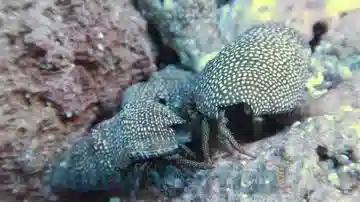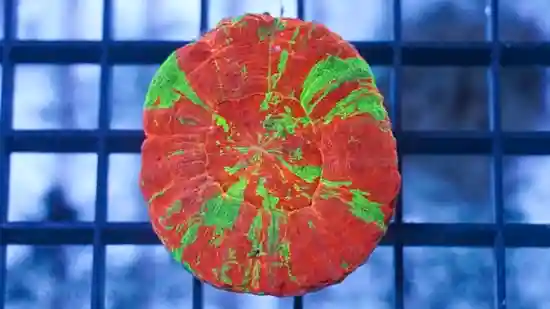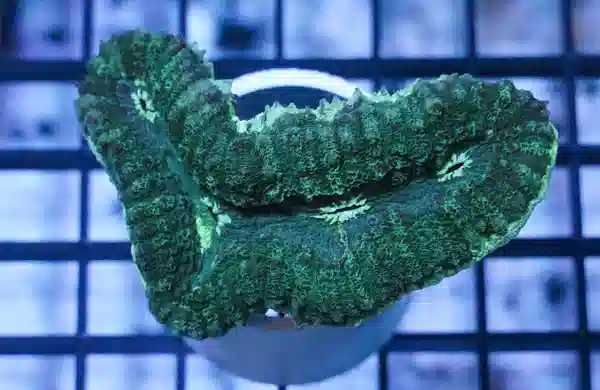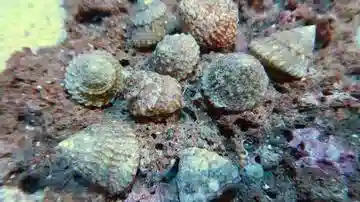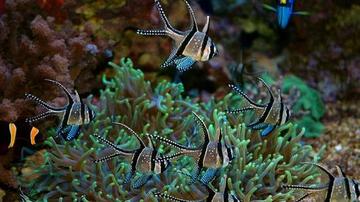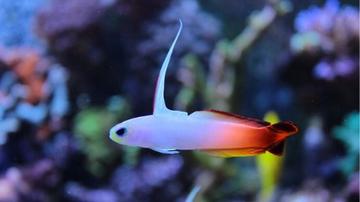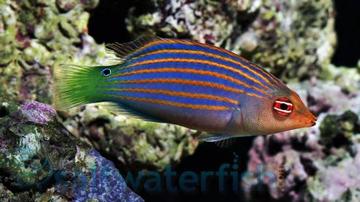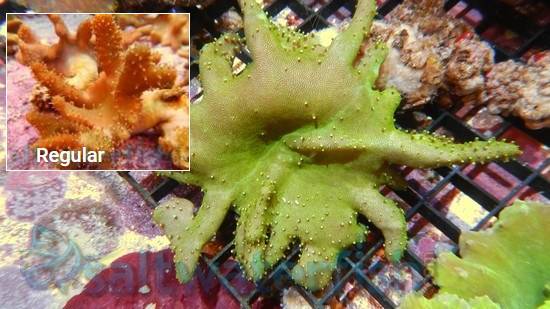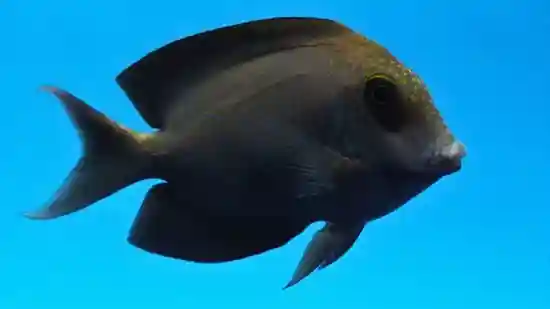Striated (Orange Stripe) Tang
Ctenochaetus cf striatus
(2 Reviews)
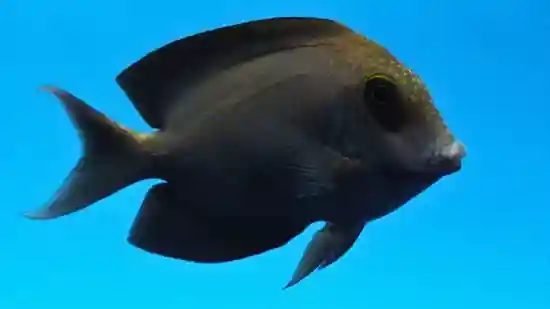
Striated (Orange Stripe) Tang
Ctenochaetus cf striatus
(2 Reviews)
{{ item.name }}
Size: {{ item.extra_field_3 }}
${{ getFormattedPrice(item.saleprice) }} ${{ getFormattedPrice(item.price) }}
To join the waiting list, click here
Free Shipping
With
$199.00
or more in Marine Life.
More details...
Striated (Orange Stripe) Tang Care Facts
| Care Level: | Moderate |
|---|---|
| Temperament: | Semi-Aggressive |
| Diet: | Herbivore |
| Origin: | Indo-Pacific Ocean |
| Acclimation Time: | 2+ hours |
| Reef Safe: | Yes |
| Minimum Tank Size: | 150 gallons |
| Max Size: | 10 inches |
The Striated Tang (Ctenochaetus striatus), also known as the Orange Stripe Tang, can be found widespread throughout the Indo-Pacific and into the Red Sea. They have a dark brown or maroon body with horizontal stripes and occasional spots on their face. They are herbivorous, feeding on macro algae and seaweed, and should have plenty of space to swim. They reach a maximum size of 10 inches, require a tank of at least 150 gallons, and should be kept with other fish of similar size and temperament. They require plenty of space to swim and graze, and are beneficial to reef aquariums as they help remove unwanted algae from corals or rocks.
Striated Orange Stripe Tang (Ctenochaetus striatus): A Practical Care Guide
The Striated Orange Stripe Tang, scientifically known as Ctenochaetus striatus, is a unique and captivating marine species that can be a valuable addition to your saltwater marine aquarium. This no-nonsense guide will provide essential information on caring for this distinctive fish, covering its habitat, compatibility, diet, care requirements, and more.
Habitat of the Striated Orange Stripe Tang
Striated Orange Stripe Tangs are native to the Indo-Pacific region, particularly the waters around coral reefs and rocky areas. They are often found at depths ranging from 3 to 50 feet (1 to 15 meters), where they graze on algae and small invertebrates.
Reef Compatibility of the Striated Orange Stripe Tang
This species is generally considered reef-safe. Striated Orange Stripe Tangs are herbivores, primarily feeding on algae. They can be an excellent choice for reef aquariums, where they help control algae growth. However, like all tangs, they may occasionally nip at certain corals, especially if their dietary needs are not adequately met.
Size and Lifespan of the Striated Orange Stripe Tang
Striated Orange Stripe Tangs typically reach about 6 to 7 inches (15 to 18 cm) when fully grown. They can live 5 to 7 years in captivity with proper care, providing several years of enjoyment for dedicated aquarists.
Diet in Captivity of the Striated Orange Stripe Tang
In their natural habitat, Striated Orange Stripe Tangs graze on various algae and small invertebrates. In captivity, it's essential to replicate their natural grazing behavior. Provide them with high-quality marine algae sheets, seaweed, and a mix of marine pellets and frozen foods such as brine shrimp and mysis shrimp.
Aquaculture and Availability of the Striated Orange Stripe Tang
Striated Orange Stripe Tangs are not commonly available through aquaculture. However, Saltwaterfish.com is dedicated to providing hobbyists with responsibly sourced fish, ensuring that each Striated Orange Stripe Tang is healthy, acclimated, and ready to thrive in your aquarium.
Compatibility with Other Fish and Invertebrates of the Striated Orange Stripe Tang
Striated Orange Stripe Tangs are generally peaceful but can become territorial when introduced to an established community aquarium. When selecting tankmates, choose species that can coexist peacefully and are not overly territorial.
Sexual Dimorphism of the Striated Orange Stripe Tang
Sexual dimorphism in Striated Orange Stripe Tangs is minimal, and distinguishing between males and females based on visual characteristics can be challenging.
Juvenile to Adult Coloration Changes of the Striated Orange Stripe Tang
Juvenile Striated Orange Stripe Tangs typically exhibit more vibrant coloration, with orange stripes and a white or pale body. As they mature into adults, their coloration may become less vivid, with some individuals developing a more subdued appearance.
Temperament of the Striated Orange Stripe Tang
Striated Orange Stripe Tangs are known for their generally peaceful character. However, they may become territorial when introduced to an aquarium with limited space or when they feel their territory is threatened.
Tank Requirements of the Striated Orange Stripe Tang
To provide the best care for your Striated Orange Stripe Tang, maintain a tank with a minimum size of 150 gallons (600 liters). This ensures ample swimming space and helps reduce territorial conflicts. Water conditions should mimic their natural habitat, with a pH level between 8.1 and 8.4, a salinity level of 1.020-1.025, a stable temperature between 74-78°F (23-26°C), and moderate water flow to simulate ocean currents.
Common Names of the Striated Orange Stripe Tang
The Striated Orange Stripe Tang is also known by various names, including Orange-Lined Bristletooth Tang and Yellow-Stripe Bristletooth.
Compatible Tank Mates of the Striated Orange Stripe Tang
Here are five specific species that can make suitable tank mates for your Striated Orange Stripe Tang:
- Flame Angelfish (Centropyge loriculus)
- Royal Gramma (Gramma loreto)
- Lawnmower Blenny (Salarias fasciatus)
- Six-Line Wrasse (Pseudocheilinus hexataenia)
- Coral Beauty Angelfish (Centropyge bispinosa)
Why Choose the Striated Orange Stripe Tang from Saltwaterfish.com
When you acquire a Striated Orange Stripe Tang from Saltwaterfish.com, you're investing in a visually striking addition to your saltwater marine aquarium. Saltwaterfish.com is committed to responsibly sourced fish, ensuring that each Striated Orange Stripe Tang is healthy, acclimated, and ready to thrive in your aquarium. With their dedication to quality and a wealth of resources, Saltwaterfish.com makes it easy to enjoy the unique beauty of these tangs in your home aquarium.
The Striated Orange Stripe Tang (Ctenochaetus striatus) is captivating and peaceful in saltwater marine aquariums. With their striking coloration and distinctive feeding behavior, they can be an intriguing choice for both beginner and experienced aquarists looking to add a touch of vibrancy to their collection. By adhering to their specific requirements and providing a suitable environment, aquarists can witness the Striated Orange Stripe Tang's presence in their aquatic habitat.
Reviewed by: Maria Robles on Sept. 25, 2024
Hands down the most beautiful readily available species of bristle tooth Tangs. Very hardy and voracious algae eater.
Reviewed by: Sean Boyer on Jan. 23, 2024


